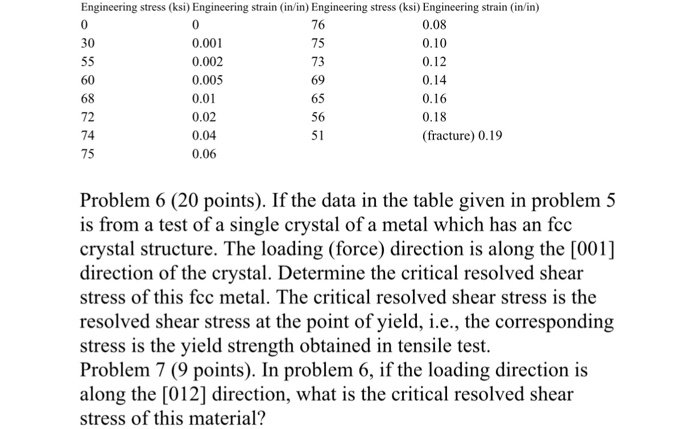KSI in engineering stands for ‘thousands of pounds per square inch,’ a crucial unit that measures the strength of materials. Understanding KSI is fundamental in analyzing the durability and integrity of structural components. In engineering parlance, KSI serves as a key indicator of a material’s ability to withstand pressure and stress. Knowing what KSI represents allows engineers to make informed decisions when selecting materials for construction projects. Join us as we delve deeper into the significance and applications of KSI in the dynamic world of engineering.
What is ksi in Engineering: Understanding the Strength of Materials
Welcome to our blog where we dive into the fascinating world of engineering! Today, we are going to explore an important concept in materials science: ksi. If you have ever wondered what ksi means and how it is used in engineering, then you are in the right place. Let’s unravel the mystery behind ksi and its significance in the world of structural design and analysis.
The Basics of KSI
KSI stands for “kilopounds per square inch,” and it is a unit of measurement used to quantify the strength of materials, particularly metals. To put it simply, ksi is a way to measure how much stress a material can withstand before it deforms or fails. In the world of engineering, understanding the ksi value of a material is crucial for designing safe and reliable structures.
How KSI is Calculated
Calculating ksi involves dividing the force applied to a material (in pounds) by the area over which the force is applied (in square inches). This simple calculation gives us a measure of the stress on the material, expressed in kilopounds per square inch. For example, if a material can withstand 50,000 pounds of force over a one-square-inch area, its ksi value would be 50 ksi.
Importance of KSI in Engineering
Now that we know what ksi is, let’s delve into why it is so crucial in the field of engineering. The ksi value of a material provides engineers with valuable insights into its mechanical properties, including its strength, durability, and elasticity. By knowing the ksi value of a material, engineers can make informed decisions about which materials to use in a given application.
Strength and Durability
One of the key aspects of ksi is its relationship to the strength and durability of a material. Materials with higher ksi values are able to withstand greater amounts of stress before failing, making them ideal for applications where strength is paramount. By using materials with high ksi values, engineers can ensure that their structures are robust and able to withstand various loads and environmental conditions.
Elasticity and Flexibility
In addition to strength, the ksi value of a material also provides insights into its elasticity and flexibility. Materials with lower ksi values are typically more elastic, meaning they can deform under stress and return to their original shape once the stress is removed. On the other hand, materials with higher ksi values are less elastic but more rigid, making them suitable for applications where deformation is not desirable.
Real-World Applications of KSI
So, where do we see ksi values being used in real-world engineering applications? Let’s explore some common examples of how ksi is applied in various industries:
Construction Industry
In the construction industry, ksi values are used to determine the appropriate materials for building structures such as bridges, buildings, and roads. By selecting materials with suitable ksi values, engineers can ensure that these structures can withstand the forces they will be subjected to during their lifespan.
Aerospace Industry
In the aerospace industry, where safety and reliability are of utmost importance, ksi values play a critical role in the design and manufacturing of aircraft and spacecraft components. By using materials with high ksi values, engineers can create lightweight yet strong components that can withstand the extreme conditions of space travel.
Automotive Industry
In the automotive industry, ksi values are used to evaluate the strength and durability of materials used in vehicle components such as chassis, engine parts, and safety features. By selecting materials with optimal ksi values, automakers can produce vehicles that are safe, fuel-efficient, and long-lasting.
In conclusion, ksi is a vital concept in engineering that allows us to quantify the strength and durability of materials. By understanding the ksi values of different materials, engineers can make informed decisions about which materials to use in their designs, ensuring the safety and reliability of the structures they create. Next time you come across the term ksi, remember that it represents much more than just a unit of measurement—it symbolizes the foundation of modern engineering practices.
We hope this article has shed light on the significance of ksi in engineering and inspired you to explore the world of materials science further. Stay tuned for more exciting insights from the field of engineering in our future blog posts!
How to Install and Use KSI Civil Engineering Library
Frequently Asked Questions
What is the significance of ksi in engineering?
KSI stands for kilopound per square inch and is a unit of stress commonly used in engineering. It represents the amount of force in kilopounds acting on one square inch of area. KSI is typically used to measure the strength of materials such as steel and other metals.
How is KSI calculated in engineering applications?
To calculate KSI, you divide the force in kilopounds by the area in square inches that the force is acting on. For example, if a force of 10 kilopounds is applied to an area of 2 square inches, the stress would be 5 KSI (10 KSI / 2 in²).
Why is KSI important in material testing and design?
KSI is crucial in material testing and design as it helps engineers understand the strength and durability of different materials under stress. By knowing the KSI of a material, engineers can determine its suitability for specific applications and ensure structural integrity in engineering projects.
Final Thoughts
In engineering, ksi stands for “kilopounds per square inch,” which is a unit to measure stress or pressure. Ksi is commonly used in structural design to represent the strength of materials. Understanding what ksi is crucial for ensuring the safety and stability of engineering structures. Engineering professionals frequently refer to ksi values when working on projects that require precise calculations and structural analysis.




